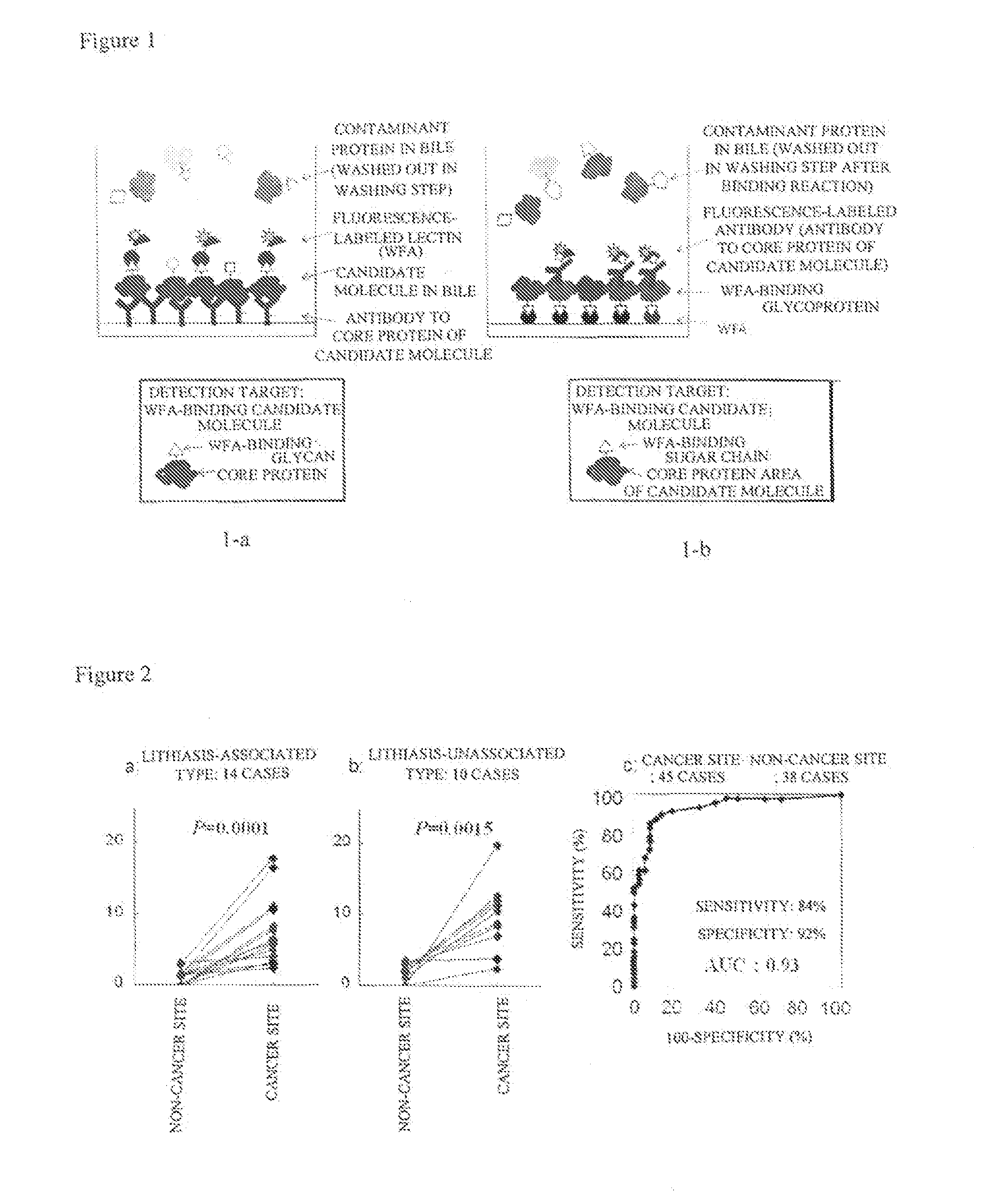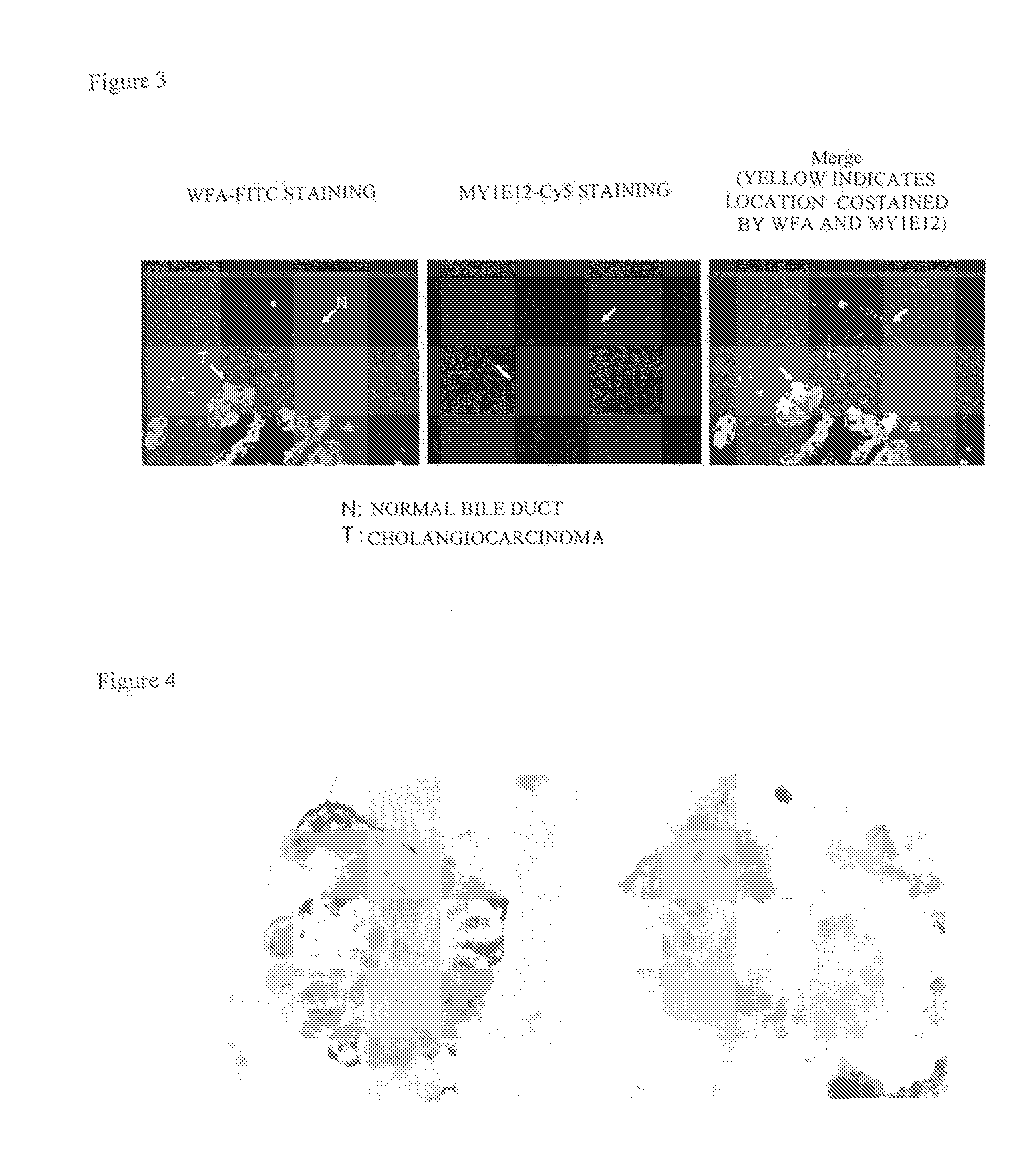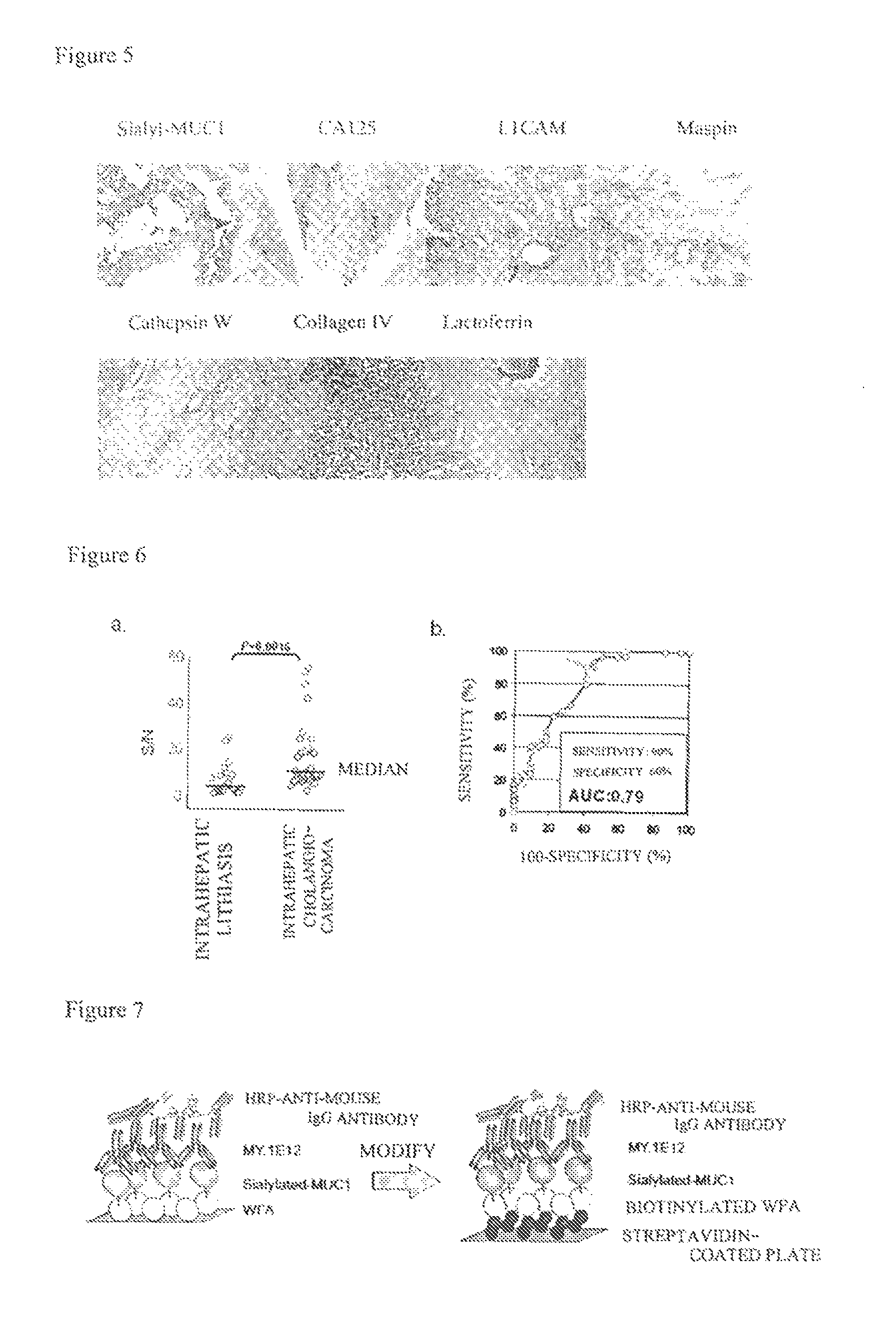Method for detecting and distinguishing intrahepatic cholangiocarcinoma
a cholangiocarcinoma and intrahepatic technology, applied in the field of detecting and distinguishing intrahepatic cholangiocarcinoma, can solve the problems of difficult differentiation of hepatocellular carcinoma from hepatic cholangiocarcinoma, low survival rate, etc., and achieves accurate detection, high precision, and simple procedure
- Summary
- Abstract
- Description
- Claims
- Application Information
AI Technical Summary
Benefits of technology
Problems solved by technology
Method used
Image
Examples
example 1
[0079][Selection of Intrahepatic Cholangiocarcinoma-Specific Glycan-Recognizing Lectin Using Lectin Array]
[0080](Test Method)
[0081]A lectin microarray has more than 40 plant lectins exhibiting different binding specificity, which are immobilized on the same glass plate, and can be used to analyze simultaneously the interactions thereof with a sugar chain on the glycoprotein to be analyzed (Kuno et al., Nature Methods 2: 851-856, 2005). This system was used to choose suitable lectins to perform intrahepatic cholangiocarcinoma-specific staining. In this experiment, patients associated with lithiasis (cancer and non-cancer areas in the same sections), 10 patients unassociated with lithiasis (cancer and non-cancer areas in the same sections), 21 cancer areas from patients unassociated with lithiasis, and 14 non-cancer areas from patients unassociated with lithiasis were used. In brief, the total number of analyses was 45 for cancer areas and 38 for non-cancer areas. The protocol from th...
example 2
[0094][Detection of Intrahepatic Cholangiocarcinoma Using Intrahepatic Bile Duct]
[0095]As shown in Example 1, it is possible to find out intrahepatic cholangiocarcinoma in a tissue section by WFA staining. In next, surgical specimen from intrahepatic cholangiocarcinoma patients but for lithiasis was used to perform as follows.
[0096](Experimental Method)
[0097]Tissue staining with WFA was carried out as follows using a staining kit, Histo-fine (Nichirei Corporation). Formalin-fixed and paraffin embedded materials from intrahepatic cholangiocarcinoma patient were sliced (5 μm thick). Deparaffinized and rehydrated sections were washed with PBS, air-dried, immersed in a 10 mM citrate buffer (pH 6.0), and autoclaved at 121° C. for 15 minutes to dissociate intermolecular (intramolecular) crosslinking due to formalin. The treated section was allowed to stand for a while at room temperature and then repeatedly immersed for 5 minutes three times, and the tissue surface was washed. Then, the b...
example 3
[0103][Detection of Intrahepatic Cholangiocarcinoma Using Cells in Bile]
[0104]Bile duct drainage was conducted to perform releasing obstructive jaundice, and the bile collected at the time was used as a sample for analysis. When WFA staining was performed by the same procedure as in Example 2, WFA-positive cells were identified in a sample in which the presence of cancer was confirmed by histologic diagnosis and biopsy, resulting in cytologically determined cancer. However, no cells stained by WFA were identified in a sample in which histologic diagnosis and biopsy for cancer was negative (FIG. 4: the results of histochemical analysis by WFA staining in a biopsy preparation).
PUM
| Property | Measurement | Unit |
|---|---|---|
| binding constant | aaaaa | aaaaa |
| binding constant | aaaaa | aaaaa |
| thick | aaaaa | aaaaa |
Abstract
Description
Claims
Application Information
 Login to View More
Login to View More - R&D
- Intellectual Property
- Life Sciences
- Materials
- Tech Scout
- Unparalleled Data Quality
- Higher Quality Content
- 60% Fewer Hallucinations
Browse by: Latest US Patents, China's latest patents, Technical Efficacy Thesaurus, Application Domain, Technology Topic, Popular Technical Reports.
© 2025 PatSnap. All rights reserved.Legal|Privacy policy|Modern Slavery Act Transparency Statement|Sitemap|About US| Contact US: help@patsnap.com



